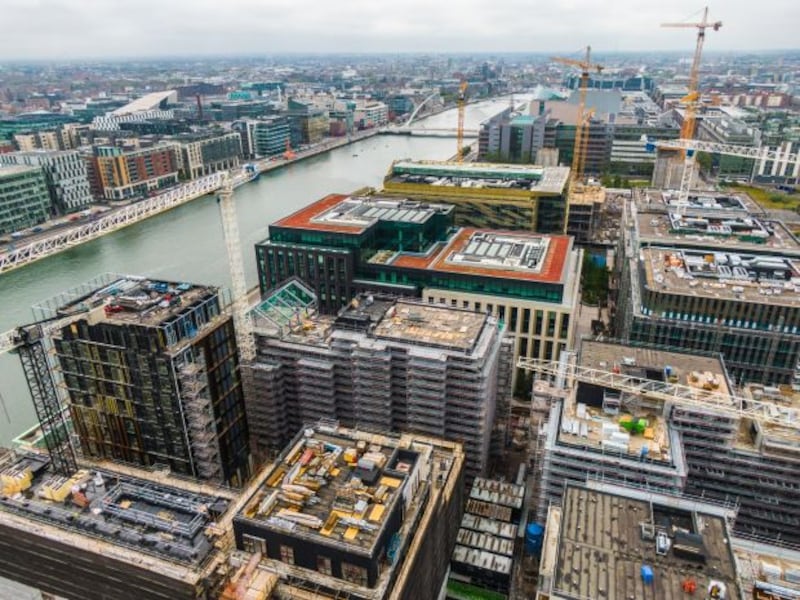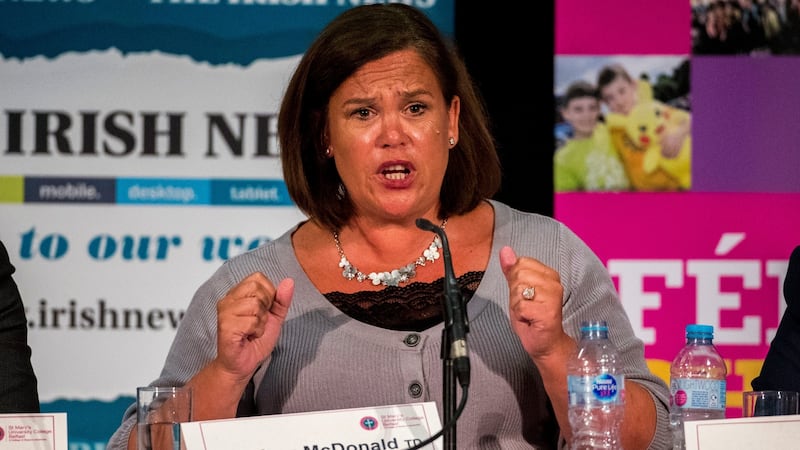As fears grow of a no-deal Brexit, the possibility of a Border poll on a united Ireland is back on the news agenda, even if the Government is saying it will not be rushed into supporting this option. But what would be the key issues in merging two very different economies, which have had divergent fortunes in recent years ? And how would the issue of the huge subsidy from the UK exchequer be dealt with?
New research sheds light on the economics of a united Ireland and the divergent performance of the two economies. And it points to the huge amount of further research and decision making which would be needed in planning out the future of a united economy.
1. The top-line figures: The economies of Northern Ireland and the Republic are very different in many respects. However new research by two ESRI economists, Séamus McGuinness and Adele Bergin*, published by the Institute of Labour Economics, points out that in income per head terms, while the North trails well behind the East and Southern regions of Ireland, it is slightly ahead of the Republic's poorest region, the Border, Midlands and West.
The North appears to have benefitted little from an economic peace dividend and the gap in living standards with the rest of the UK has remained roughly constant between 2000 and 2014. In UK regions, only the North East and Wales have lower incomes. GDP per capita – a measure of economic output per head – in the North was 50 per cent below that in the richer parts of the Republic in 2014, but still ahead of the poorer regions south of the border. These figures pre-date the massive distortion to Irish GDP data due to multinational tax moves in 2015, though precise comparisons are still difficult.
Research has shown that while the EU has closed gaps between countries in terms of incomes, big gaps within countries have often remained
The researchers find that “while unification would involve the integration of a relatively poor region into the Irish economy, it would not be particularly out of sync with Ireland’s current poorest performing region.”
2. Two different economies: The ESRI research looks at the key differences in structure between the two economies. For many years after partition, the North – with its large industrial base –was richer. But the huge flow of inward investment into the Republic, combined with the economic impact of the Troubles in the North, led to a dramatic turnaround. And the North has not harvested a large economic peace dividend, failing to attract large flows of foreign direct investment and remaining hugely reliant on the public purse.
GDP per capital in the North rose by just 7 per cent between 2000 and 2014, less than a quarter of income growth in the richer parts of the Republic. This is despite the Republic suffering a huge income loss during the economic crisis. However the paper finds that the growth rate in the North’s income per capita is similar to that experienced in the Border, Midlands and West regions of the Republic over the same period. Both the UK and Ireland seem to have failed in terms of regional policy in spreading economic growth. Separate research has shown that while the EU has closed gaps between countries in terms of incomes, big gaps within countries have often remained.

Interestingly the research finds that the North’s economy is not highly integrated either with the rest of the UK or the Republic. This is in tune with previous research which has shown that cross-border trade in Ireland is less than would be expected for two adjacent economies, despite the supply chains which have built up in recent years.
The structure of the two economies also varies. The North relies more on the public sector – responsible for more than a quarter of economic activity on some estimates – and on average its industry is less productive and trades much less internationally than the Republic’s. Just under 10 per cent of employment is in public administration in the North, twice the Republic’s level, and the North also employs a higher percentage in education and health, though the gap here has narrowed in recent years.
The proportion working in industry is around 10 per cent in both cases, though the inflow of foreign direct investment has left the Republic’s industrial sector much more productive. In turn this has turned the Republic into a much more open, trade reliant economy -– even counting in sales to the rest of the UK, the North exports 35 per cent of its business turnover, compared to 54 per cent in the Republic. The service sector is also much more important in the Republic – driven in part by the impact of big players like Facebook and Google. The Republic’s industrial sector is much more productive, even if allowance is made for the distortion in the economic data due to multinational accounting practices.
The final point made by the researchers on competitiveness is the big gap in educational attainment North and South, a key factor in attracting FDI to the Republic and a block to making the North’s economy more productive. The North has a much higher share of the population with no qualifications and a much lower proportion having completed second level. The proportion of people holding post-second level education is also much higher in the Republic.
A range of studies have pointed to the need for higher levels of investment in the North, not only in education but in areas like research, innovation and enterprise supports. A presentation by economists John FitzGerald TCD and Edgar Morgenroth of DCU estimated the need for a doubling of investment in the North in physical infrastructure, human capital and other key investments.
3. Who pays? The subvention question: One of the much-discussed issues is the significant support or subvention for the North from the UK exchequer, much of it in the form of an annual grant. The gap between spending in the North and revenue collected in taxes there is about £9 billion. The paper by FitzGerald and Morgenroth estimated that the financial hit of reunification, if the Republic picked up the full tab and funded the North as it now stands, could cost the Republic a permanent hit of 15 per cent to its level of GDP. No one is suggesting that this is exactly how it would happen, but it is a measure of what would be faced.
A lot would depend on exactly how it all worked. The paper by the ESRI researchers points out that the subvention includes spending representing the North’s contribution to all UK expenditure in areas like defence and national debt interest, much of which would – presumably – fall away in a united Ireland scenario. This accounts for around a quarter of the subvention. Presumably negotiations would be needed in areas like the UK national debt and whether all this would revert to the London exchequer.

FitzGerald and Morgenroth looked at other possible approaches, including a “tough love” approach of cutting the subvention and the size of the public sector and boosting investment to try to kick-start the private sector. This would bring significant short-term disruption, though a smaller public sector in the North is assumed by many studies.
There are also two other questions. One is whether the UK government might continue to pick up some of the tab during a transition period. Sinn Féin have highlighted the cost of public pensions, for example, as an area where London should continue to pay. This also plays into the debate about how the move to a united Ireland might be dealt with politically and how a transition might be structured. The ESRI research says there are few international examples here, but does point to the 13-year gap between the signing of the original declaration and the handing over of Hong Kong to China in 1997.
Politically a no-deal Brexit may build support for a Border poll, but economically it means the starting point would be worse
The second question is whether there are gains from merging two economies which could help to pay the bills. US research led by Dr Kurt Hubner of the University of British Colombia went as far as estimating that it could add €36 billion to the island's GDP over eight years, as the Northern economy transformed and savings accrued on one government structure.
While other economists also point to potential benefits, no other study has painted a similar picture in terms of the size and speed of the gains. And the ESRI research, and earlier work, while pointing to the potential for faster growth in the North, also underlined the massive challenges and the huge financial question on how a united Ireland would be funded.
*******
The bottom line is that much work remains to be done here, if we do move into the era of planning a Border poll and beyond. A clear explanation would be needed to voters on how it might work, what it might cost and what the strategy would be.
The paper by the ESRI researchers points out that the long-term answer to the question of how to replace the UK financial subvention lies in making the North’s economy more productive and addressing its key weaknesses, likely requiring a massive investment programme. Support of a Border poll must outline how this would work and how long it would realistically take, the researchers say. And who would pay.
Presuming Brexit goes ahead, a process for getting the North, as part of a new united state, into EU membership and the single market would also be vital. This could also involve the EU in the transition process which is likely to be required, the paper points out. Might this be another source of investment support?
Of course a key issue is that we have to get through Brexit first. Unfortunately, if it is a no-deal Brexit, it will take a heavy hit on both parts of the island. Politically this may build support for a Border poll, but economically it means the starting point would be worse than now exists.
* The Political Economy of a Northern Ireland Border Poll: Institute of Labour Economics discussion paper by Seamus McGuinness and Adele Bergin















